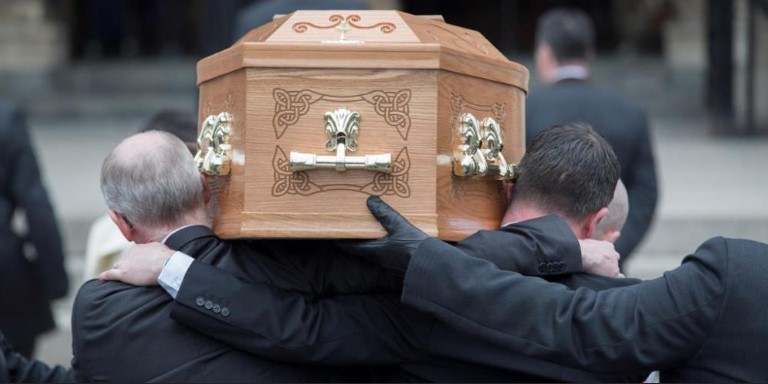
Taoist funeral services are a significant part of Singapore’s rich cultural heritage, reflecting the deep spiritual beliefs of the Taoist community. These rituals and practices provide comfort and guidance for families while ensuring that their loved ones transition peacefully to the afterlife. If you’re unfamiliar with Taoist funeral rites and traditions, preparing for such a service can seem overwhelming. This guide will break down the essentials to help you understand what to expect and how to prepare for Taoist funeral services in Singapore.
2. Core Elements of Taoist Funeral Traditions
But before going into the preparations, it’s essential to understand the makeup of Taoist funeral traditions. And that is:
- Ritual Prayers: Taoist monks chant sacred texts to navigate through the afterlife.
- Offerings: Food, incense, and paper things are offered to the deceased person.
- Feng Shui: The preparation of the place of the funeral follows specific Feng Shui precepts.
- Funeral Colors: The main colour of mourning is white, being the attribute of purity.
- Veneration of the Gods: Taoist Gods are, most of the time, venerated to ensure the safe passage of the soul.
3. Find a Taoist Funeral Service Provider
The first step in planning for a Taoist funeral in Singapore is identifying a suitable funeral service provider. With many years of experience in Taoist funeral rites, these professionals will help you navigate every step.
- Experienced Matters: Ultimately, find a provider with a long history of arranging Taoist funerals.
- Customized Packages: Additionally, confirm whether the service provider has packages that fit your family.
- Cultural Sensitivity: Moreover, the service provider should be knowledgeable about certain Taoist ceremonies and traditions.
Choosing an authentic service provider will spare you from logistical pressure and allow you to focus more on paying respect to your dear deceased.
4. Designate a Taoist Priest
The Taoist priest is significant in the funeral process. Moreover, he leads the prayers and practices the rites, guiding the soul toward the afterlife.
- Confirm Sect: Additionally, he ascertains if the priest was from the sect of the deceased to perform the appropriate rites.
- Coordination: Furthermore, the priest should coordinate with the provider of the funeral to determine the ritual schedule.
- Chanting of Prayer: Moreover, Taoist priests chant scriptures that guide the soul through the netherworld.
The priest is essential for Taoist funeral rites, ensuring that all customs are observed and carried out appropriately.
5. Wake Preparations
The wake is an essential component of the Taoist funeral ritual. The multi-day vigil provides family and friends with the opportunity to make their last respects while the priests carry out rituals that guide the spirit of the deceased.
- Duration: In Taoist traditions, the wakes take between three, five, and seven days.
- Venue: The wake can be held at home, in a funeral parlour or at the HDB void deck.
- Offerings: Some food, incense and paper offerings should be prepared for the dead.
During the wake, family members are supposedly to come on guard but with the consideration of switching seats to keep watch over the dead so that at any point they are not left unattended.
6. Preparing the Altar
The altar is the focal point of the funeral rite. However, here, sacrifices and prayers for the dead will be offered.
- Picture of the Deceased: Put up a framed picture of the deceased in the middle of the altar.
- Offerings: Put some symbolic offerings such as fruits, rice and joss papers.
- Incense and Candles: Light the incense and candles to create a respectful and solemn ambience.
It will be improper if the altar will not be arranged according to the Taoist traditions. Additionally, the rites should thus go well with the proper arrangement of the altar.
7. Rituals and Offerings
Taoist funeral rituals and offerings primarily help the deceased’s spirit have a smooth journey to the afterlife.
- Daily Prayers: The priests recite prayers each day to aid the soul in finding its way through the netherworld.
- Paper Offerings: Paper items such as houses, cars, and money are burnt to offer comfort to the deceased in the afterlife.
- Feeding the Soul: Food is provided to the soul each day to supply it with the energy for its journey.
All these rites signify respect for and care for the dead even beyond death.
8. Funeral Rites of Mourning for Family and Guests
Family members and other guests observing Taoist funeral rites should be conversant with correct etiquette.
- Attire: Whites are on the body of the family members; visitors wear sombre colours.
- Condolence: Bow to the family members and speak with warm words of condolence.
- Monetary Offerings: A small amount of money is offered (in an envelope) to aid in payment for the funeral.
Moreover, the customs mentioned above are a gesture of respect to the deceased and his family members.
9. The Funeral Parade
On the last day of the funeral, the family carries the corpse to the burial or cremation location in a cemetery parade.
- Decorated Hearse: Taoist themes that have symbolic meanings often decorate the hearse.
- Walking with the Coffin: The family accompanies the hearse to pay respects.
- Ritual Stops: There may be specific places where priests need to stop to perform additional rites.
The funeral procession is well-symbolic within Taoist funeral rites since it represents the last journey of the deceased.
10. Interment or Cremation
Burial and cremation are equally acceptable practices in Taoist funeral services, however, in many cases, it depends on family preference and local tradition.
- Burial: Families inter the body in a Taoist cemetery, usually considering Feng Shui principles.
- Cremation: Families place the ashes in an urn and bury them in a columbarium if they choose cremation.
- Final Rites: Priests will conduct final prayers either at the burial or cremation ground to make the transition a bit smoother.
This concludes the funeral rites, but the family will continue to make offerings and prayers for the deceased regularly.
11. Mourning Rituals and Post-Burial or Cremation Rites
Although burial or cremation marks the end of the ritual, Taoist funeral rites extend further.
- 49-Day Mourning Period: After the funeral rites, the family members enter the mourning period, which lasts 49 days. However, during this time, they will continue to make prayers.
- Annual Commemoration: The dead are given respect on death day and during major festivals such as Qingming.
- Sacrifices: Keep on performing sacrifices to enjoy comfort in the afterlife.
These regular rituals help families not lose touch with the dead.
12. Conclusion
Preparing for a Taoist funeral service in Singapore can evoke strong emotions and present challenges. However, understanding the basics empowers you to honour your deceased family members by their beliefs. From selecting the funeral service provider to hiring a Taoist priest for the wake, arranging the rituals conducted during the wake, and conducting the right rituals for the final farewell, every step serves as a guiding light in making it a respectful and meaningful journey. Lastly, these Taoist funeral rituals will have you comforting the departing soul and help bring comfort to your grieving family.
If you are also planning for end-of-life arrangements, consider using the compassionate services that HockHin UnderTaker offers to support you during this challenging time with dignity and respect.
Also Check: An Overview of Taoist Funeral Rites and Traditions
Name: Hock Hin Undertaker
Address: 38 Sin Ming Dr, Singapore 575712
Phone: +65 98221489

